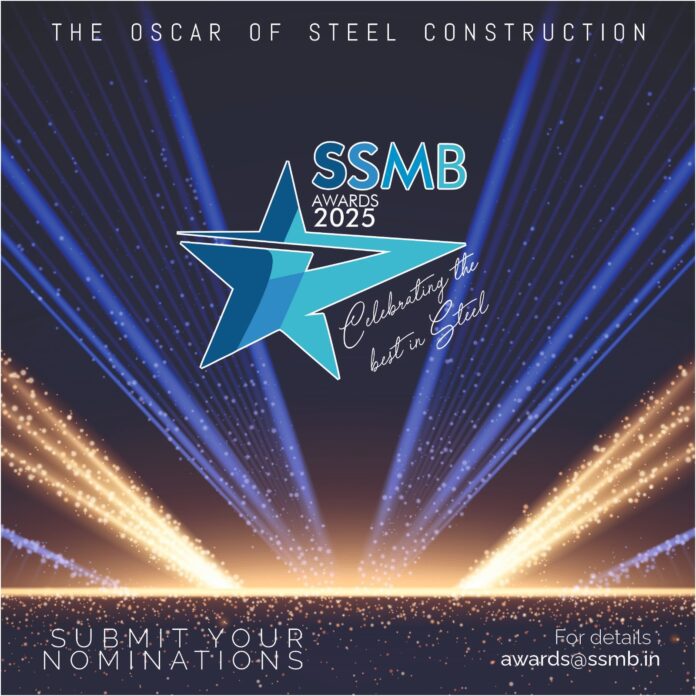Inspired by the canopy of a banyan tree, SRM University’s Amravati Campus makes innovative use of steel to connect spaces. Ar. Raja Shyam Sundar, Partner, PTK Project Consultants LLP, shares more…

The brief
With the aim to expand its operations in Andhra Pradesh, SRM University selected the then-new capital Amaravati as an ideal location. The institute is set to be on par with international universities in terms of pedagogy and infrastructure with a particular interest from the Chief Minister of Andhra Pradesh.
The university was envisioned with an emphasis on interaction, transparency, technology, and research. In collaboration with Chicago-based Perkins and Will, PTK Architects developed a master plan for the 200-acre university which would house 50,000 students.
The government of Andhra Pradesh wanted the university to start immediately, prompting the master planners to earmark 14 acre in the northeast corner of the property for building a launch campus which would house 1,500 students.

In the Limelight
When the site was inspected for the first time, it was barren land devoid of vegetation. There was a lone tree which provided much-needed shade for everyone. This initiated the design thought of a grand canopy mimicking a banyan tree. After construction, this pavilion became the central space for all the users.
The launch campus needed to have academic buildings, administration buildings, girls’ and boys’ hostels, dining areas as well as married students’ accommodations. 700,000 sq ft needed to be constructed within seven months which was then partly opened to students. The buildings were designed as three individual blocks and towers that were interconnected. The academic building being fragmented posed a major challenge which was solved by introducing a steel pavilion at 30 m height, thus, integrating all three buildings together.
Interaction spaces such as exhibition areas, indoor games, food outlets, bridges, clubs, outdoor reading areas in the library, and grand staircases were provided in the connection spaces.
The steel roof is elevated from the main structure in order to allow the hot air to move out and keep the atrium spaces ambient.
Material Choices
Steel was selected as the building material for this pavilion because of its flexibility. The base steel structure was up even before the completion of the RCC structure.
Slender columns support a massive canopy above the building like that of a banyan tree. This was possible only with space frames designed as ‘pods’ supported by individual columns which also housed rainwater down-take pipes. Steel sheets were fixed at the bottom of the pod to conceal the space frame. Minimum concreting and waterproofing were done on top of the decking sheet to prevent rainwater leakage.
The top of the columns were detailed as shreds of a tree branch with a skylight pyramid nestled in the apex. Some of the spaces such as the library were placed directly under the canopy to provide ample daylight. Steel as a material was the only choice for such a large span with minimum supports and aided in the speed of construction. It required minimum site work with a crane to lift the pod and a boom lift to bolt it in position.
Tech Toolkit
Architectural drawing details were made with AutoCAD and Revit while the structural detailing for steel and concrete structures was done using STADD and ETABS.
Making the mark
The whole operation was carried out by two skilled labourers and a supervisor. This would not have been possible if the material used was not steel. It was also very safe for the people to work.
The steel decking sheets eliminated the need for a false ceiling below. It was neatly painted and left as such. Large HVLS fans were fixed to improve the ventilation in the atrium areas.
The clients were worried about the cost of such a pavilion and the usage of it. It was particularly challenging to convince KPMG of the cost-benefit aspect of the roof. But once completed, the significance of such a roof was quickly realised with the myriad of usable spaces it provided at a lesser cost than that of an RCC building.
Fact file
- Client: SRM University, Andhra Pradesh
- Architect: PTK Project Consultants LLP
- Consultant: KPMG India, ANPCPMC
- Steel Fabricator: Geodesic Techniques
- Status: Completed




